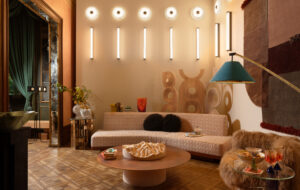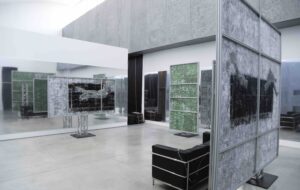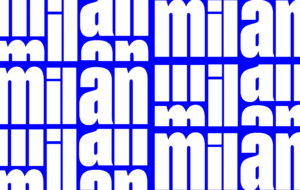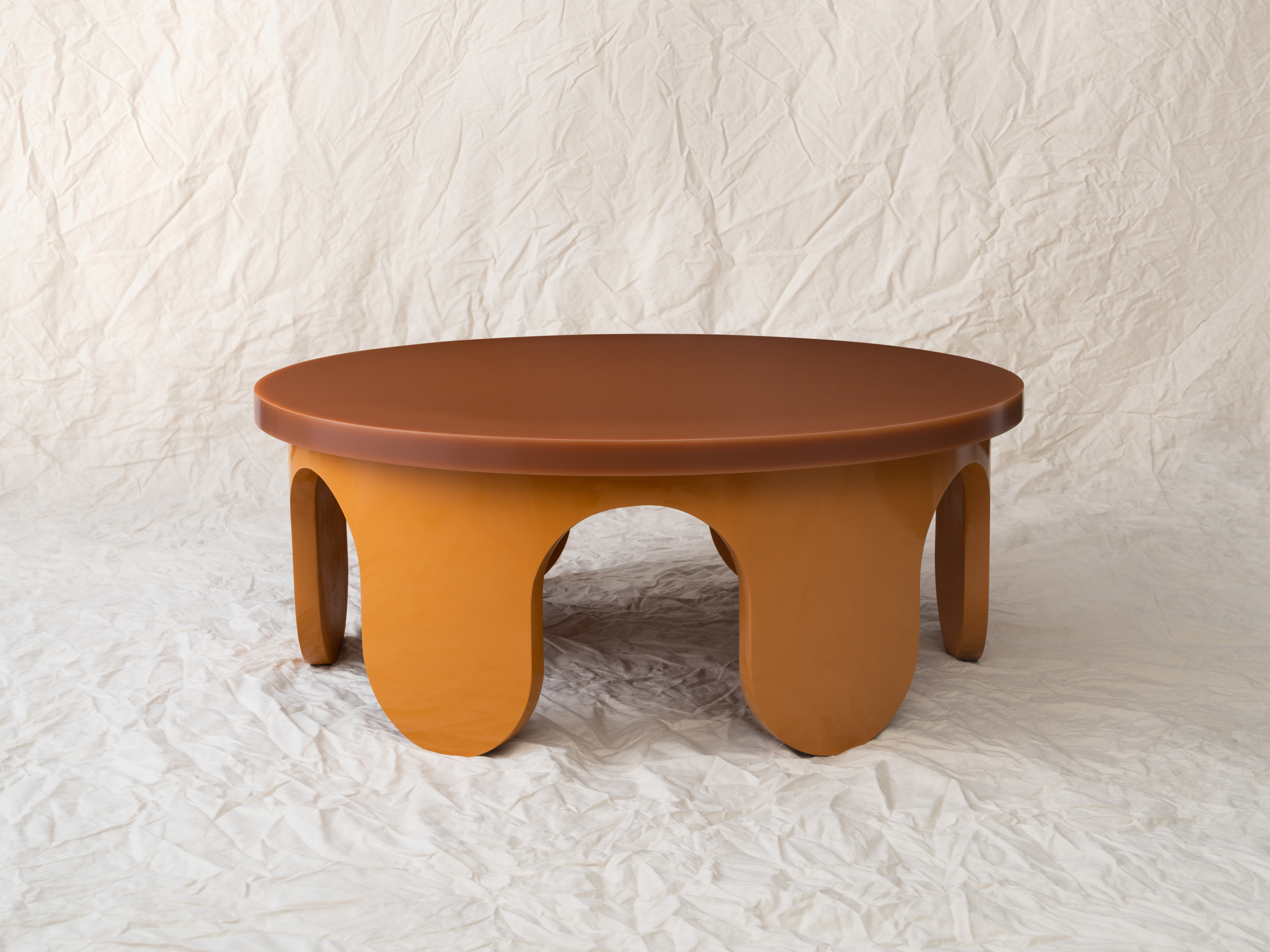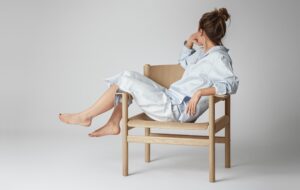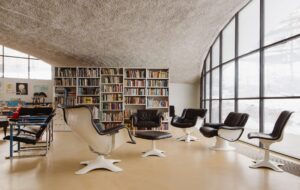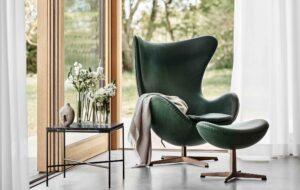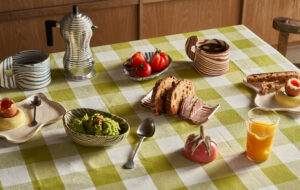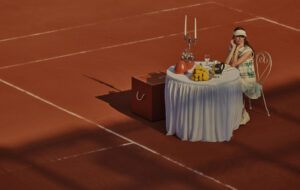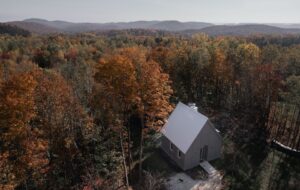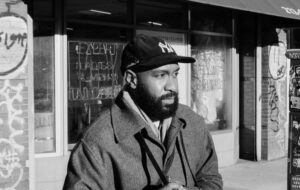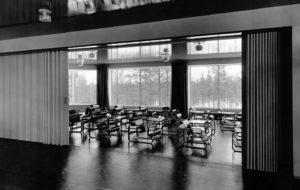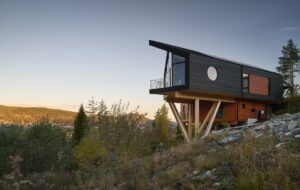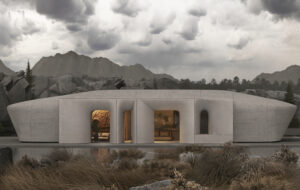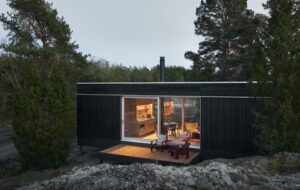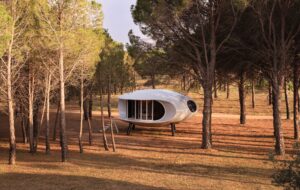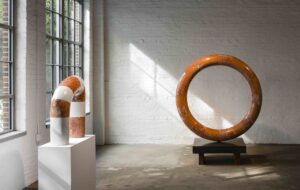



words Kieran Long
The client for the Anderson House, a wealthy lawyer, endured a whole summer of living in a semi-derelict backlands warehouse near Oxford Circus in London just to see if he liked living in the area. He plumbed-in a bath himself, and settled down to live in garret-like surroundings. With commitment like this to the project, it is little wonder that this has turned out to be one of the most remarkable new houses in the capital in recent years.
The architect of the Anderson House is Jamie Fobert, a Canadian who studied in Montreal, before coming to London to work for David Chipperfield, where he stayed for nine years. He started his own practice in 1996, occupying a building he developed in Old Street, East London. The office has now grown to four people, with a range of mostly domestic work which has the kind of subtle complexity that seems redolent of Chipperfield, with perhaps more interest in scale than proportion, and a developing material language that he feels is becoming something of a signature. His use of concrete – often cast against cellophane to give it wrinkles and inconsistencies – and black steel will be much-copied.
The Anderson House feels like a watershed project for Fobert, and has had a lot of attention for a building that is very small. It won an RIBA Award and the Manser Medal for best one-off house this year, beating the hot favourite – Tony Fretton’s Red House – in the process. It consists of just three main volumes: the high and grand living space; the modest timber-lined guest bedroom which overlooks the lounge; and the master bedroom, with its concrete bath, shower piece and terrace. It is distinct from most contemporary houses in having a single line of circulation that never doubles back on itself and at no point allows you to read the entire arrangement of the house. Like a subterranean promenade architecturale, it consciously frames a set of views along a journey from one doorway to another; and yet the route is very much a route, the rooms very much rooms. Indeed, it takes some brainwork to realise the relative positions of the main volumes.
This promenade begins with the long journey from the front door, through a corridor, down a flight of stairs and then round a corner to the main living space. This slim corridor was the only access to the site during construction, and remains so now. It is also forced to descend to basement level by rights of light issues affecting adjoining buildings. However, the building does not feel like a basement.
This house, partly out of necessity, is resolutely inward-looking and contemplative. Its inwardness is turned to dramatic and beautiful effect, particularly in the views from the guest bedroom to the living room. Looking from this very small bedroom through two layers of glass to the living area allows the newly proximate ceiling to take on the qualities of the sky (through reflections in the light-well) and of a rumpled duvet with ripples created by the Cellophane-wrapped formwork.
The site is very complex, in a backlands area of a highly built-up city block near Oxford Circus, Central London. The client’s decision to live in the building that previously occupied the site enabled him to give the architect specific hints and tips. For example, the site is surrounded by the backs of shops, and the client was woken up at 6am every morning by the sound of hundreds of refrigerators being turned on at once. This prompted a new interior skin that is acoustically sealed against outside noise. Also, the south end of the site is overlooked by housing, making any outdoor space preferable at the north end of the site where office accommodation predominates. The promenade therefore ends with a moment of release at the north of the building – a huge opening section of wall on to the terrace from the master bedroom.
“When you look at the circulation on that plan it looks wrong,” says Fobert, “and I don’t know if I would do it again. Something that I like, that a lot of people have said about the house, is that it is somehow inevitable.
“When we did the house for [photographer] Nick Knight in 1989 [while Fobert was still a partner with David Chipperfield] he used to talk about windows that light rooms in terms of aperture. This has a relationship to the camera – which is Italian for room, obviously. Openings are always working in different ways and with different effects. He used to talk about windows for views being about framing, and for light about aperture.”
That this became influential is hardly surprising on a site with no view. Another house, recently gone to tender, explores ideas of view in a much different way. The house is in the picturesque Faha near Dingle Bay in the west of Ireland, and adds to a collection of late 18th-century farm buildings on a hillside. This complex creates an intriguing and dense agglomeration of spaces that provide views out, covered outdoor rooms and a projecting box for the dining room which looks out on to the courtyard.
It is obvious from browsing Fobert’s office bookshelf in Old Street that his touchstones are more likely to be artworks than architecture. He picks out one in particular – the Spanish sculptor Eduardo Chillida – as compellingly current in his work. It is as if Fobert looks to Chillida for a way of making form that is highly architectural but one that is not exclusively interested in the rigour of structure, more in carving away volumes from a mass than constructing from the ground up. The study models for the Faha House reflect this approach, with their subtly varying rooflines, voids and solids.
Chillida’s tectonic obsessions combine with a mystical vision, which for Fobert links with a certain pragmatism that gives him a way out of the frustration he feels about much of the contemporary architecture he admires.
“When I’m sketching and drawing I have a whole set of things that I don’t want to do,” he says. “I think it’s a way of being clear. Not many architects would admit to it – it’s as if everyone is pretending it all happens through pure talent.
“There is a tendency in a lot of the British architecture I like to simplify things to the point where they are not interesting anymore. Some architects are afraid of being accused of being poetic. But there are things in [Alvaro] Siza’s work, for example, which are pure whimsy. There are ways of doing it without going to the other extreme.”
The Anderson House does not quite reach these levels of the whimsical. However, the highly articulated composition of concrete planes in the master bedroom shows that Fobert is not afraid of doing a piece of sculpture. This piece appears at first to be purely sculptural, but functions pleasingly in a way that screens the bathroom hardware from you when you are lying in bed. It is also the most explicit reminder of one of Fobert’s breakthrough projects – the Aveda cosmetics showroom in Marylebone High Street, which was the project that first inspired the client to employ the practice.
Fobert says that he feels the house is “singular”, but although the house is certainly unique, it feels like part of a developing body of work. The interest in proportion and scale here is a case in point. The distance from the front door to the easternmost point of the building is the same as the length of the living room. The proportions of the house reach like fingers in the city block, and Fobert creates legible volumes and passages that are clearly separate.
Fobert’s design for a house for the photographer Nadav Kandar in North London has some of the same concerns, here taking the opportunity to place volumes within one another, and starts to question the hermeticism of some of the room-making of the Anderson House. This house, which is currently on site, excavates another grand living space on the ground floor, but adds a mezzanine that reads as a discrete volume. Also, opening the glass doors at the back of the house extends the reach of the living space into the garden. This building promises to be even richer than the Anderson House – a combination of identifiable domestic spaces, and the looser proportions and territories that Fobert began to explore with his design for The Upright Figure installation at Tate Modern in 2002.
As for the future, Fobert says that he has something of a “fear of a project that has nothing to generate the project from. Even in nine years with Chipperfield I never had to do a building on a green field”. His latest work seems to be taking a few powerful architectural ideas and working them through, and that even if he says his strengths are in problem-solving, it is clear from the Anderson House that there is serious artistry at work here. His work is poised, cultured and improving and is taking him towards a point where he could be one of the UK’s most important young architects.
architect Jamie Fobert Architects (Jamie Fobert, Kevin Allsop, Emily Roberts, Thomas Spranger, Juan Cuevas Pareras)
contractor Horgan Brothers
quantity surveyor Boyden & Company
party wall Arena Property Services
structural engineer Michael Barclay Partnership.

